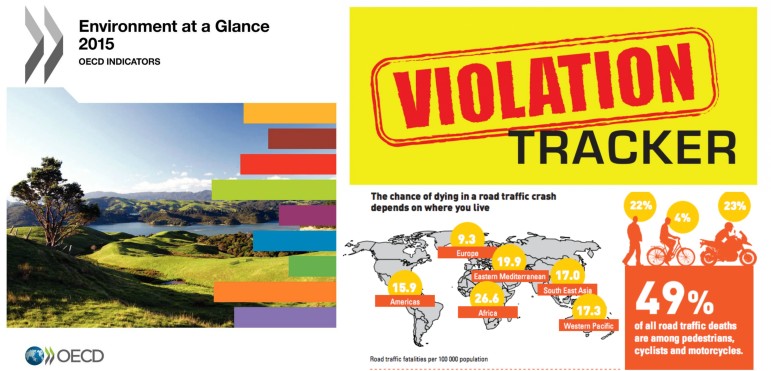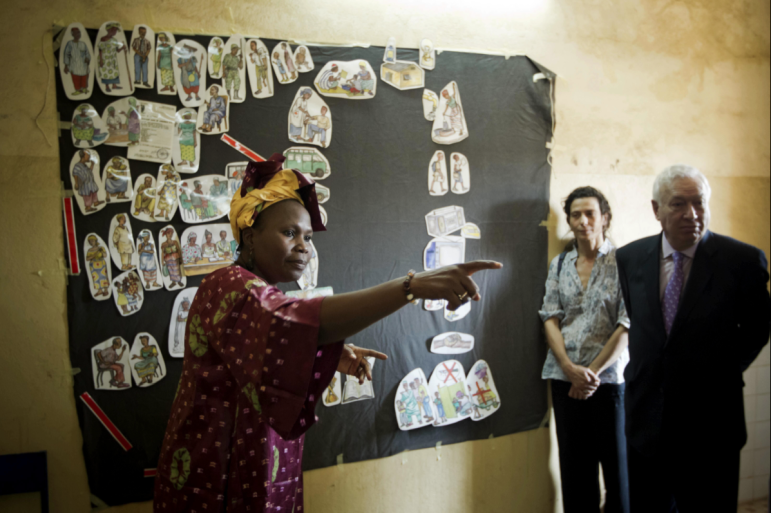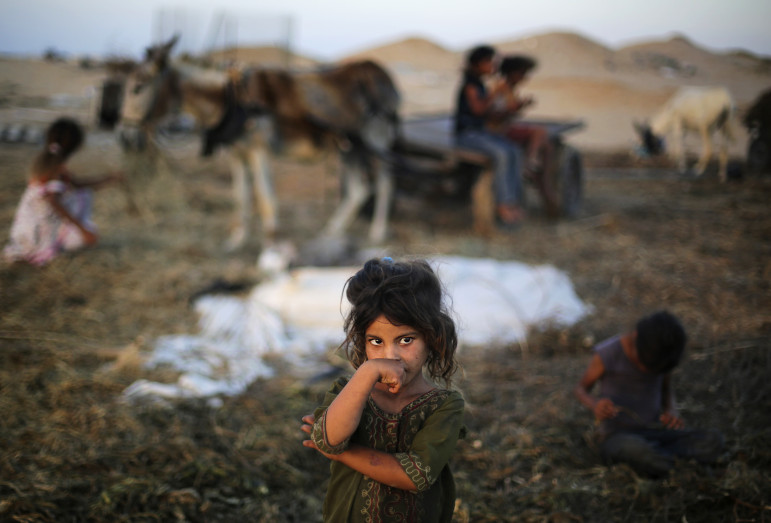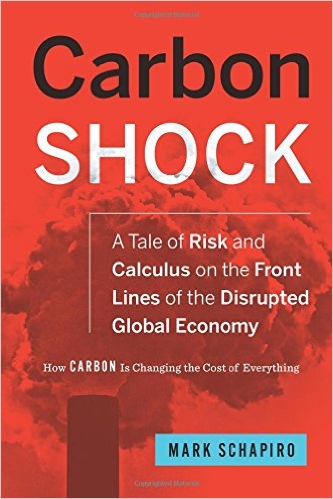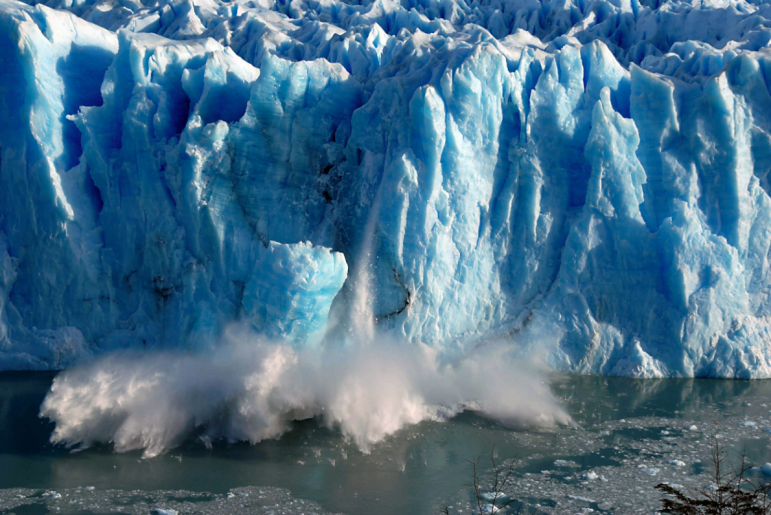

Global Is Local, Local Is Global: Tips on Covering the Environment
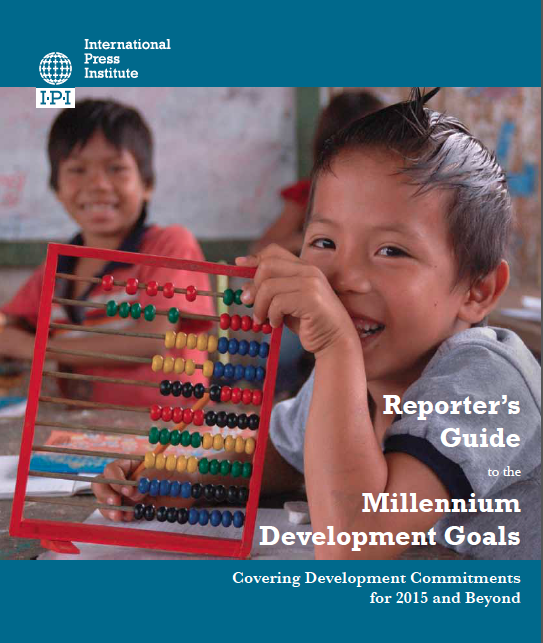 Part 10 of a series GIJN is excerpting from the Reporter’s Guide to the Millennium Development Goals: Covering Development Commitments for 2015 and Beyond, published by the International Press Institute.
Part 10 of a series GIJN is excerpting from the Reporter’s Guide to the Millennium Development Goals: Covering Development Commitments for 2015 and Beyond, published by the International Press Institute.
The environment is the overarching issue of the 21st century for two reasons:
1. The environment includes and touches everything: air, water, food, health, climate, energy, development, poverty, economics—the list could go on without end.
2. Nearly every major environmental indicator is in decline.
We are pushing up against the limits of the Earth’s ability to support us. Climate change, biodiversity loss, and nitrogen pollution are moving toward crisis levels, according to recent studies. There is little public awareness of this reality, which means journalists covering the environment have a plethora of important stories to cover.
It is not all doom and gloom pieces, though. There are many, many good news stories to be written about the diversity of efforts on both local and national scales that attempt to address these problems. At the same time, it is important to investigate whether proposed solutions, projects or “green” policies actually solve problems, and whether or not there are actual or potential unintended consequences. The world is littered with well-intended projects gone bad for one reason or another.
The seventh Millennium Development Goal (MDG) is to ensure environmental sustainability by 2015. Sustainability is a much misused and misunderstood concept. In general, it means an action or activity can be continued indefinitely with little, or manageable, impact on the environment. Earth is a closed system—wastes and pollution end up somewhere: pesticides sprayed in Chile could harm fish stocks off the coast of Australia and vice versa.
Claims are often made that a business, policy, or action is sustainable. But is it really? Are there indirect impacts on other regions or resources? What about future generations? Many sustainable projects fail to be truly sustainable due to poor implementation or poor understanding of the situation in the local region or community.
Journalists should ask for proof or demonstrations of true sustainability. They should not accept assurances. And when using the term in a story, explain what it means.
Fortunately, Goal Seven, ensuring environmental sustainability, has specific indicators to measure a nation’s or region’s progress. Let’s look at just one because the same general approach would apply to all.
Reduce Biodiversity Loss
Biodiversity is the term used for the estimated 8.7 million species (give or take 1.3 million) that form our life support system by producing the planet’s air, water, food, and much more. Species of plants, animals and others are becoming extinct at a rate of 5,000 to 30,000 per year. And the speed of this biodiversity loss is increasing, as members of the Convention on Biological Diversity (CBD) acknowledged in 2010. They have set new targets for 2020.
As in any environmental story, journalists covering the decline of species in their region need to not only show how people and the environment are being affected, but also try to determine the root causes. Biodiversity loss on land results primarily from the alteration of natural habitats due to agriculture, deforestation, and resource exploitation. In the oceans, it is mainly the result of overfishing. However, the root cause of land conversion and overfishing are often specific policies (rules and regulations) and current economic circumstances.
What Do Sustainable Policies Look Like?
“The right rules and legal frameworks help millions of people to do the right thing,” according to The World Future Council, a German charity that gives awards to countries with the best environmental and development policies. Rwanda’s National Forest Policy won the 2011 award for its comprehensive “total landscape” approach that has led to a 37-percent increase in forest cover. It also resulted in reduced erosion and improved local water supplies and livelihoods, all while helping to ensure peace.

- Earth from 35,000 km in space. Credit: NASA.
The Costa Rican Biodiversity Law was the 2010 winner for its success in making the Central American country the first developing nation to succeed in halting and reversing deforestation. Even small policy changes can make a difference. Niger, for instance, adopted a rule allowing local people in the Sahel without land titles (formal property rights) to own naturally regenerating trees if they protected and cared for them. Now millions of hectares of desert landscape are green.
Perverse Incentives or Bad Policies?
Many policies, such as certain types of subsidies, were created many years ago and without awareness of their negative impacts on the environment. Even when such policies have clear negative impacts on the environment, powerful vested interests resist and often prevent any changes to those policies. Here are two of the biggest perverse incentives:
Fisheries
Governments give away an estimated US$27 billion worth of subsidies to support fishing fleets at a time when fishing pressure must be reduced because most ocean fish stocks are over-exploited.
Fossil Fuels
Keeping climate change to a minimum will require sharp reductions in use of fossil fuels, since their carbon emissions are the primary cause of climate change. However, the fossil fuel sector receives US$300 billion in annual subsidies. Price and production are the two main types of subsidies. Many governments in the developing world use price subsidies to keep the costs of fuel low. Developed countries mainly use production subsidies to reduce the industry’s exploration costs. Various analyses show that both forms of subsidies increase consumption.
Tips for the Savvy Environmental Journalist
1. Learn the science really well, in as much detail as possible. It is the only way you can write plainly and keep yourself from being deceived.
2. Because you cannot know everything, make sure you use sources that are reliable and who do not have a hidden agenda. Some scientists or experts have vested interests or are paid by corporations and lobby groups. This includes NGOs and governments.
3. Check the content of news studies, reports, or press releases with trusted sources. There are organizations paid to confuse reporters on technical issues or to promote certain agendas.
4. Question and challenge all information and arguments, no matter where or which side they come from. Credibility is everything.
5. Avoid “he said—she said” stories that just trade accusations. Find out what is really going on. For example, nearly every climate scientist in the world has been saying for years that climate change is happening now, and yet some media still quote sources saying “no, it isn’t.” There will always be contrary viewpoints—someone who says the Earth is flat—but why quote them in a story?
When it is not obvious, be able to make an accurate assessment of each argument, and then decide which merits attention, or point out flaws and lies.
6. Get out and meet people involved in environmental issues, including those directly impacted.
Global Is Local and Local Is Global
Virtually all aspects of environmental stories are local. Climate change, water, food, pollution, sustainable development, biodiversity, etc. have local angles. But these stories are also unfailingly global—a local environmental issue is almost certainly replicated in many other places around the world.
Coping with Complexity
Science and environmental issues can be challenging for the public to understand due to the technical language and complexity, so journalists should act as translators by using clear, concise language and relevant examples to explain the science and the issues. Here are some tips:
1. Start by doing background research on the subject. Science has its own language and uses some common words differently. For example, the word “theory,” as in theory of gravity or theory of climate change.
2. During interviews ask sources how they would explain their findings if they were speaking to a neighbor. (If that is still too complicated, ask how they would explain it to a ten-year-old child.)
3. Never be embarrassed to say “I don’t understand.” It is the expert’s role to help journalists do their job of making the research or findings understandable to the public.
4. The story should answer these four questions: Why is the study or report important? How does it affect the public? What are implications for people, region, etc? What should be done?
5. Write so your grandmother will understand.
Stephen Leahy has been an independent, environmental journalist for nearly 20 years. His writing has appeared in dozens of publications worldwide, including New Scientist, The Sunday Times (UK), The Guardian, Al Jazeera, National Geographic, Maclean’s Magazine, The Toronto Star, Wired News, Audubon, BBC Wildlife, and Canadian Geographic. Based outside of Toronto, he is currently the international science and environment correspondent for Inter Press Service News Agency.
Excerpted from Reporter’s Guide to the Millennium Development Goals: Covering Development Commitments for 2015 and Beyond. Agreed to in 2000, the UN Millennium Goals comprise an ambitious agenda to improve quality of life around the world, focusing on such issues as poverty, gender equality, and education. This unique manual, available in four languages, offers journalists practical tips on covering these critical areas as we near the 15th anniversary of the goals. Twenty-one journalists across six continents contributed to the report, including several active in GIJN. We are grateful to the publisher, the International Press Institute, for permission to publish the series, and to the European Press Photo Agency and EFE Agency for permission to publish the accompanying photos.

